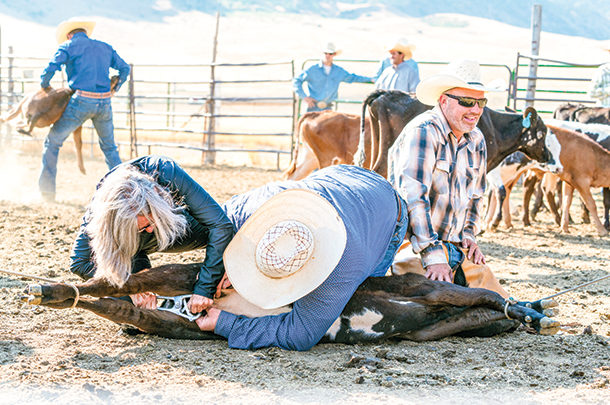One industry practice that is essential is the castration of male calves, whether performed on the ranch or at feedlot arrival.
The market tries to discourage producers from marketing intact males using price discounts imposed by both feeder cattle buyers and packers. Sale barn price discounts are related with the need to compensate for the expected weight loss typical following castration at feedlot arrival. When it comes to packer discounts, bull carcasses are known to have decreased tenderness and lower quality grades, less marbling, when compared to steer carcasses, and in today’s quality-driven market, steer carcasses are more in demand.
Opinions on the best method and time to castrate will differ depending on past experiences and producer preferences. There is no straightforward answer to which method is best, because there are numerous variables important to consider when picking which method best fits a producer’s operation. Below are some guidelines that can help producers decide which approach to castration best fits their production system.
Castrate early. It is accepted that castration is a stressful and painful procedure. The key to reducing the stress a calf experiences is performing castration as close to birth as possible. Castration at as young of an age as possible is recommended to reduce the intensity of pain and stress experienced by the animal.
Tip: Castration should be performed before an animal reaches six months of age to minimize effect on overall growth performance and reduce animal stress.
Many producers don’t castrate bulls prior to weaning because they believe bulls will have higher weaning weights compared to steers. However, this is an industry myth because increased weight gain and feed efficiency in bulls versus steers isn’t realized until an animal reaches puberty and they start producing testosterone.
Puberty in beef cattle occurs at an average of 7 to 10 months of age; however, weaning usually occurs around 6 to 9 months of age, before the animal reaches puberty and can benefit from any testosterone production. Weight loss following castration increases as animal age increases. This means any weight advantage an intact bull has heading into the feedlot will likely be lost due to stress and weight loss post-castration.
Method. There are two primary methods of castration performed by cow-calf producers. The USDA reports that about half of producers surgically castrate, while the others use band castration. Both methods require skill and proficiency and have pros and cons associated with each.
Surgical castration usually consists of using a clean, sharp knife to remove the testes. This is a preferred method to use at branding time. Skill in knife cutting is essential to ensure castration is fast and to minimize bleeding. Surgical castration is a quick method that ensures both testes are removed. Knife cutting does cause the greatest changes in animal behavior following castration, but has a quick recovery time.
Tip: To minimize infection, make sure you have a clean, dry environment to turn calves out to following surgical castration.
Band castration is the application of an elastic band around the scrotum to restrict blood flow to the testes. Skill is needed when using this method to ensure both testes are within the band and that proper tension is applied to the band. A band with not enough tension will not properly restrict blood flow and could allow intestines to fall within the band, causing hernias. On the other hand, too much tension can cause damage to surrounding tissue or bust the band.
Banding is ideal for using in very young calves close to birth. The bands are smaller and have less of a chance of failure. A benefit of banding older bulls is that there is no open wound, but swelling is likely to occur in larger testes. Improper castration is more likely with this method compared to surgical castrations, especially if proper attention isn’t paid to making sure both testicles are within the band and that the band remains intact.
Tip: If band castration is the method of choice, it is also recommended to give a tetanus vaccination. When blood flow is restricted to a tissue area, it creates the ideal environment for tetanus.
Pain management. Pain management is not a common practice applied at castration within the U.S., despite the use of long-acting nonsteroidal anti-inflammatory drugs (NSAID) being a recommended practice by the America Association of Bovine Practitioners. This is partially due to the fact that there are no current NSAIDs approved for the mitigation of pain in beef cattle. The role of NSAIDs is to reduce inflammation at the site of tissue damage. The goal of pain management should not be to eliminate all pain experience, rather to mitigate pain and inflammation in order to allow animals to resume normal behavior.
Tip: Pain mitigation may be a useful practice when castrating older animals, such as culled breeding prospects. Implementation of pain management strategies could help reduce the negative effects associated with castrating older animals.
The growing consumer concern and awareness around pain-management practices isn’t going away, so producers need to begin addressing these concerns through developing pain management practices. ![]()
PHOTO: It is critical with band castration to make sure both testes are within the band, and the band remains intact. Getty Images.

-
Shelby Roberts
- Research Scientist
- Beef Nutrition - Research Department
- Alltech
- Email Shelby Roberts








